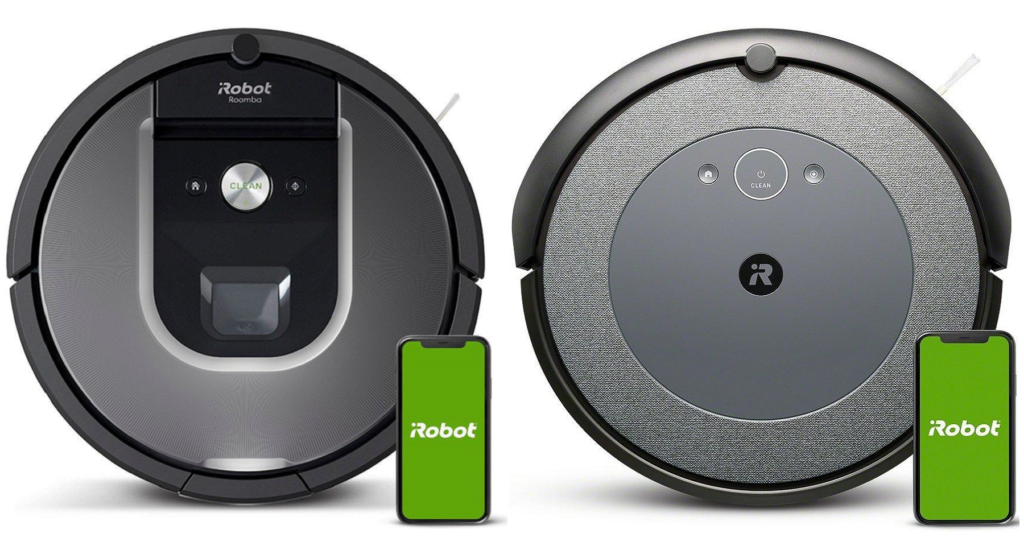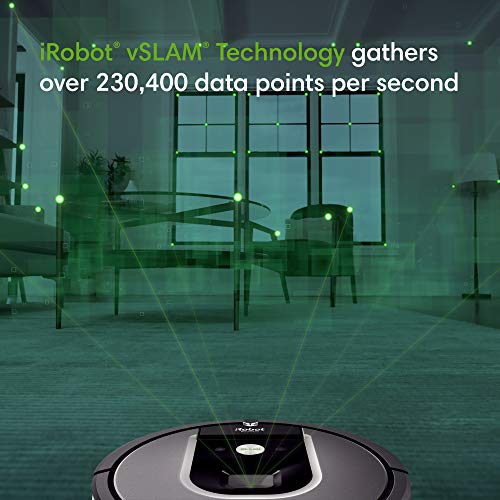It can be daunting to choose a robot vacuum when there are so many different models on the market. The Roomba 960 and the Roomba i3 are both excellent choices, and both are worth every penny. There are many differences between the two models though, and I will discuss them in detail in this article.
Contents
- 1 What are the differences between Roomba 960 and Roomba i3?
- 2 Difference 1: Roomba 960 has an onboard camera, the i3 does not.
- 3 Difference 2: Roomba i3 can be upgraded to the auto-emptying version
- 4 Difference 3: Roomba i3 has slightly stronger suction than 960
- 5 Difference 4: Roomba 960 comes with a virtual wall barrier, the i3 does not.
- 6 Similarity: Both models have recharge and resume.
- 7 Similarity: Both the Roomba 960 and i3 vacuum in straight lines.
- 8 Similarity: Both work with smart assistants
- 9 Similarity: Both have dirt detect, cliff detection, and dual anti-tangle brushrolls.
- 10 Conclusion
What are the differences between Roomba 960 and Roomba i3?
The Roomba 960 has a built-in camera and comes with a virtual wall to block off designated areas of your home. The Roomba i3 doesn’t have those but is the newer model and therefore compatible with the auto-emptying clean base. The similarities between the 960 and i3 are that both have smart navigation, recharge and resume, and anti-tangle brushrolls.
Difference 1: Roomba 960 has an onboard camera, the i3 does not.
One of the key differences between these two Roombas is the way they map out your home. The 960 relies on the its top-mounted camera to see and build a map of your house.
The i3 does this without a camera at all. Instead, it uses floor trackers on the bottom of the vacuum to scan the floor, not unlike how a mouse scans the surface of your desk to interpret your arm movement. Cameras provide better maps because they capture a wider area and more detail.
Because the i3 relies exclusively on its floor trackers to scan the floor, it can actually perform in the dark. In comparison, the Roomba 960 will need a bit of ambient light to navigate properly.
Difference 2: Roomba i3 can be upgraded to the auto-emptying version
The Roomba i3 has a bigger brother, the Roomba i3+. The i3+ is the exact same robot vacuum as the i3, but with an auto-emptying docking station included in the box. This means that at the end of each cleaning cycle, the i3+ will return to its home base and empty its contents into the giant docking station.
If you decide to go with the i3, you can actually upgrade it to the i3+ by purchasing the auto-emptying home base separately. It’s more expensive to do so than buying the i3+ outright though.
The 960 is not upgradable and can only ever be manually emptied. This is actually not too big a deal for me personally, but everyone’s situation is different. If you’re considering the i3 and 960, I suspect it’s not too big of a deal for you either.
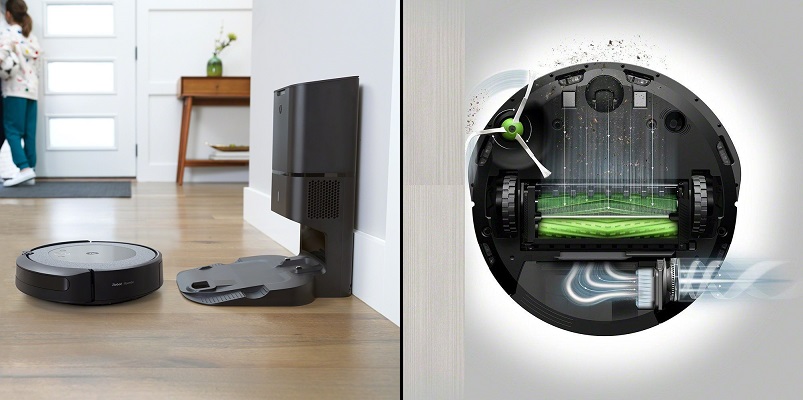
Difference 3: Roomba i3 has slightly stronger suction than 960
The Roomba i3 has stronger suction than the 960. The 960 has 5x the suction power of the Roomba 675, while the i3 has 10x. This is according to iRobot’s specifications.
However, in real-life everyday use, you can’t really tell the difference. Both do a good job of cleaning your floors, especially if they’re scheduled to clean regularly. Owners of the 960 are very happy with its cleaning performance.
Difference 4: Roomba 960 comes with a virtual wall barrier, the i3 does not.
The virtual wall barrier is an accessory included with the 960. It’s battery powered and acts like a beacon, telling the the Roomba to stay away. For example, you can use the virtual wall barrier to block off your pet’s water bowl so the Roomba knows to avoid it.
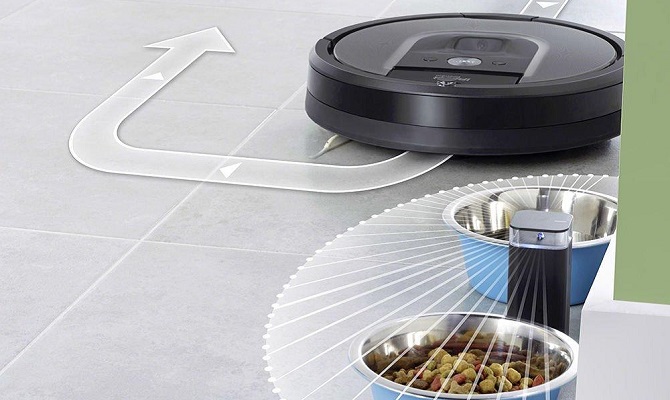
The i3 does not include a virtual wall barrier. It also doesn’t have the “Keep Out Zone” feature of higher end Roombas. However, it does still work with the virtual wall barrier accessory if you happen to have one lying around. Or it can also be purchased separately online.
Similarity: Both models have recharge and resume.
Both the 960 and i3 have the “recharge and resume” feature, meaning that if they run out of battery in the middle of a clean, they will remember where they left off, dock and recharge themselves, then resume cleaning. This is a feature we’re seeing more on modern robotic vacuums as their navigation gets smarter and more powerful.
Similarity: Both the Roomba 960 and i3 vacuum in straight lines.
Older robot vacuums use a “bump and turn” approach where they move in one direction until they bump into something, then turn a random number of degrees, and move in that new direction. The process continues until your entire house is cleaned.
The i3 and 960 are both “smart navigation” robot vacuums. This means they can clean in more or less straight lines and navigate around obstacles. This gives them the ability to be much more efficient and cover more ground in less time.
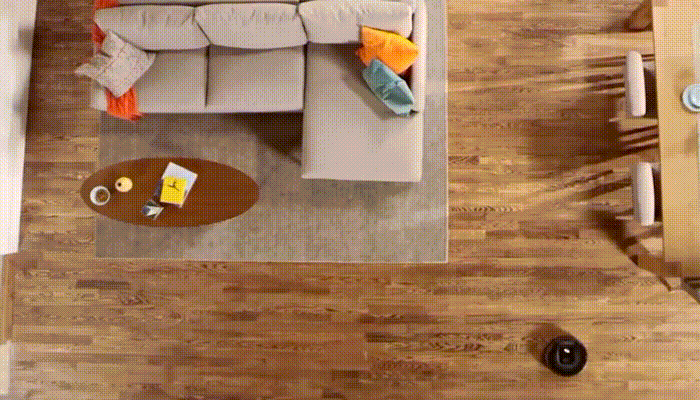
Similarity: Both work with smart assistants
The 960 and i3 work with Google Assistant, Alexa, or Siri for voice control. If you have a smart speaker, you can say things like “Alexa, tell Roomba to clean my floor” or “OK Google, start Roomba.” While this is a convenient feature, I’ve personally never used it.
Instead, I rely on the scheduled cleanings. The Roomba automatically starts cleaning at the time you set each day, and stops when it’s done so there’s not much reason to use the voice commands. It is nice to know that voice control is an option though.
Similarity: Both have dirt detect, cliff detection, and dual anti-tangle brushrolls.
Both the 960 and i3 have “dirt detect” technology, which automatically tells the Roomba to spend more time on problem areas. In fact, all current Roombas have this feature.
They also have cliff detection sensors built into the bottom of the vacuum. That way you don’t have to worry about the Roomba driving off stairs or any drop-offs you may have in your home. This is also standard on most robot vacuums on the market.
Finally, both employ dual anti-tangle brushes. If you have long hair, you know what a pain it can be to have to cut hair wrapped around a vacuum brush. The anti-tangle rubber brushes on the 960 and i3 makes hair much, much less likely to tangle up in the brush and decrease cleaning performance.

Conclusion
The Roomba 960 and Roomba i3 are very similar performers. The Roomba 960 used to be my robot vacuum of choice because it strikes the best balance of cost and features.
Now that iRobot is moving on the i and s series and all but discontinuing the 960, the i3 sits in that spot of perfect balance between price and features.
Both robots navigate smartly, can resume a cleaning job, and have anti-tangle brushrolls. These some of the most important things I look for in a robot vacuum, and both have them.
Whichever one is less expensive at the time you read this, grab that one. The Roomba 960 and i3 are both solid performers, and you will be happy with either one.
